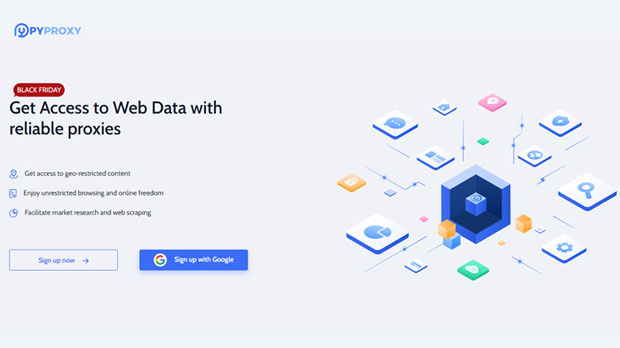When considering the purchase of PYPROXY datacenter proxies, the pricing and plan selection play a significant role in determining the overall effectiveness and return on investment for your needs. Understanding how to choose the right proxy plan requires an analysis of the number of proxies you need, the types of tasks you'll be performing, the geographical locations you require, and any additional features or performance needs. In this article, we will guide you through the process of selecting the best PyProxy datacenter proxy pricing and plans, providing insights into how each factor impacts your choice. By the end of this article, you will have a clearer understanding of what options suit your specific requirements. 1. Understanding PyProxy Datacenter ProxiesBefore diving into pricing and plans, it's essential to understand what datacenter proxies are and how they work. Datacenter proxies are IP addresses that are provided by data centers instead of residential ISPs. They are known for their high speed, reliability, and cost-effectiveness. However, they may sometimes be more easily detected by websites compared to residential proxies, as they originate from well-known data centers. They are ideal for tasks such as web scraping, automated browsing, ad verification, or managing multiple social media accounts.PyProxy is one of the prominent services offering datacenter proxies, and their pricing is structured around various factors such as the number of proxies, bandwidth limits, geographical targeting, and specific features like rotating proxies. The right plan for you will depend on the type of work you intend to use them for, as well as how many proxies you need.2. Factors Influencing the Pricing of PyProxy Datacenter ProxiesWhen selecting a plan, it's important to first understand the key factors that influence the pricing structure of PyProxy datacenter proxies:2.1 Number of Proxies NeededThe number of proxies you require will largely dictate the price you pay. In general, the more proxies you need, the higher the cost. Some plans offer bundles of proxies, while others provide flexible options where you pay for exactly what you need. If you're using proxies for individual tasks like testing or scraping on a small scale, a smaller plan with fewer proxies might be sufficient. However, for large-scale projects such as managing multiple accounts or handling massive scraping operations, you'll likely need a larger plan.2.2 Bandwidth and Traffic LimitsMany PyProxy plans are priced based on the amount of bandwidth or traffic included with the plan. Bandwidth refers to the amount of data that can be transferred between your device and the proxies. If your tasks involve heavy data usage, such as scraping large websites or running complex operations, you will need a plan that offers higher bandwidth limits. Choosing a plan with sufficient bandwidth can help avoid throttling and ensure smooth performance, especially during peak usage times.2.3 Geographical Location of ProxiesAnother critical factor is the geographical location of the proxies. Different PyProxy plans offer proxies from specific countries or regions. If you need proxies from a particular country for tasks like localized scraping, bypassing geo-restrictions, or ad testing in specific markets, you'll need a plan that provides proxies from those regions. Geographical targeting may affect the price, as proxies from more in-demand or less common regions tend to cost more.2.4 Proxy Rotation and FeaturesSome plans include features like automatic proxy rotation, where the IP addresses change periodically to help avoid detection. This is particularly important for tasks like web scraping, where websites may block or throttle IPs that make too many requests in a short time. Plans with more advanced features, such as rotating proxies, private proxies, or dedicated IPs, generally come at a higher price.3. PyProxy Pricing Plans and How to ChooseNow that we understand the factors influencing pricing, let's examine the types of PyProxy pricing plans available and how to choose the right one for your needs.3.1 Basic PlansBasic plans typically offer a small number of proxies with a set bandwidth limit, making them suitable for small-scale tasks. These plans are ideal if you only need proxies for personal or occasional use. If you’re a hobbyist or a small business owner who requires proxies for minor web scraping or testing, the basic plan can save you money while still meeting your needs. However, these plans often lack advanced features such as proxy rotation or access to a wide variety of geographical locations.3.2 Standard PlansFor businesses or individuals who need more proxies and higher bandwidth, standard plans are often the best option. These plans offer a greater number of proxies with the flexibility to scale up as needed. If your tasks include medium-scale scraping operations, managing a handful of social media accounts, or accessing multiple geo-located websites, a standard plan with sufficient bandwidth would likely be ideal. Many standard plans also offer additional features such as basic proxy rotation and access to more countries.3.3 Premium PlansPremium plans are designed for large-scale enterprises or power users. These plans provide the maximum number of proxies, along with very high bandwidth limits. Premium plans often come with advanced features like automatic proxy rotation, exclusive IP addresses, and access to a vast range of geographic locations. If you run complex operations that require continuous proxy usage, such as large-scale web scraping, SEO testing, or data analysis, a premium plan will provide the performance and flexibility needed for uninterrupted operations.4. Key Considerations When Choosing a PyProxy Plan4.1 Budget ConstraintsOne of the primary factors to consider when selecting a plan is your budget. More extensive plans with higher proxy counts, more bandwidth, and premium features naturally come at a higher price. Therefore, it's crucial to assess your needs carefully and choose a plan that offers the best value for the tasks you intend to perform. Overbuying proxies or paying for unnecessary features may end up being an inefficient use of resources.4.2 Project ScopeThe scale of your project should also influence your decision. For small, one-time tasks, a basic or standard plan will often suffice. However, for ongoing or large-scale projects, a premium plan might be necessary. Think about the frequency of use, the size of the data involved, and how much flexibility you need.4.3 Customer Support and Additional ServicesCustomer support and additional services like proxy monitoring, uptime guarantees, and troubleshooting assistance can be crucial when selecting a provider. While PyProxy may offer competitive pricing, having responsive customer service can be a game-changer if you encounter issues with your proxies. This is especially true if you're relying on proxies for mission-critical tasks.Choosing the right PyProxy datacenter proxy pricing and plan is essential to the success of your projects. By considering factors such as the number of proxies needed, bandwidth requirements, geographical targeting, and specific features, you can make a well-informed decision. Whether you're a small-scale user with minimal needs or an enterprise requiring large-scale operations, there's a plan that fits your needs. Ultimately, it’s about balancing your budget with the necessary performance, scalability, and additional services to get the most value out of your proxy investment.
Oct 23, 2025



































































